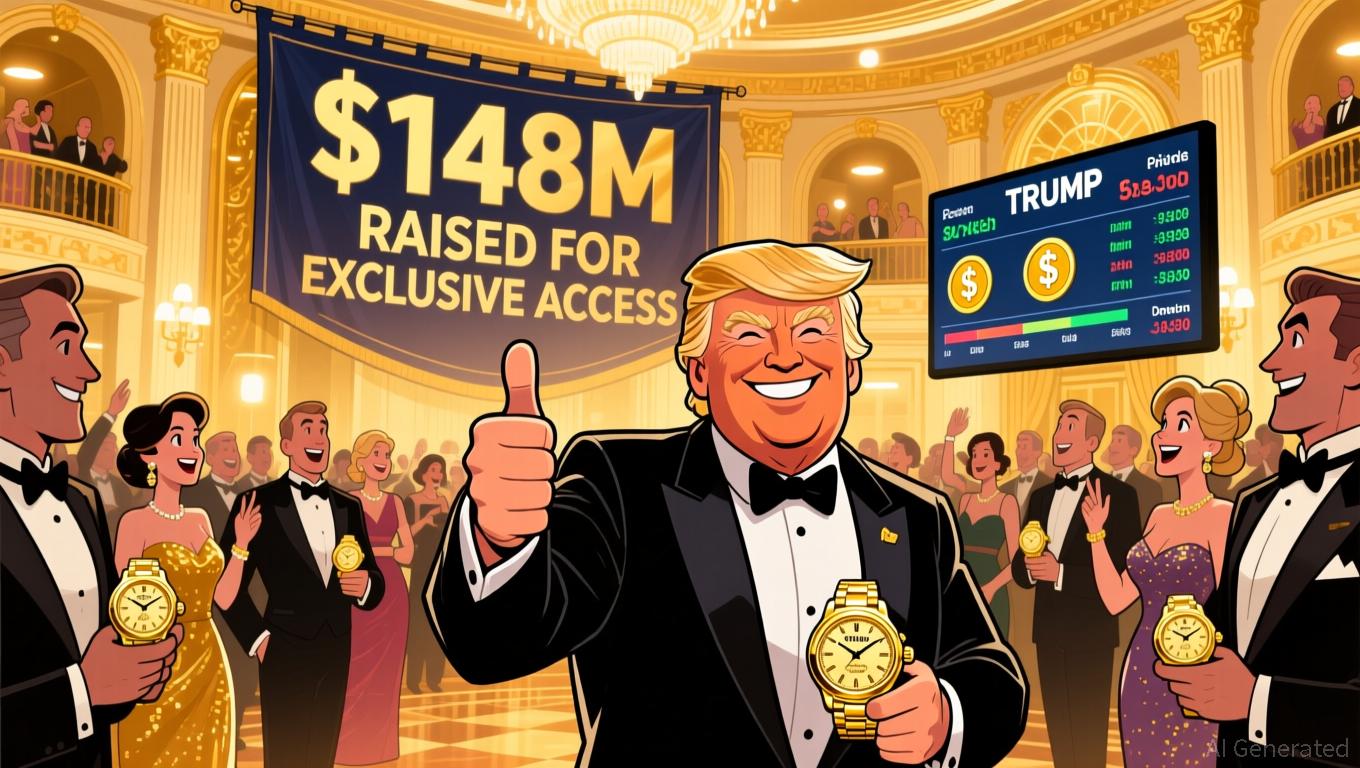Zcash (ZEC) Experiences Price Rally in Late 2025: Privacy-Focused Cryptocurrencies Return as Macro Safe-Haven Choices
- Zcash (ZEC) surged 750% in late 2025, outperforming Bitcoin and Ethereum amid growing demand for privacy-focused crypto assets. - Network upgrades by Electric Coin Company enhanced privacy via ephemeral addresses and zk-SNARKs, while Japan's crypto-friendly regulations boosted institutional adoption. - Institutional interest in Zcash's shielded transactions and low correlation with traditional crypto assets positions it as a strategic hedge against surveillance and volatility. - Regulatory clarity in Jap
Network Upgrades: Privacy Transformed
Zcash underwent a major network upgrade in the fourth quarter of 2025, led by the Electric Coin Company (ECC), introducing ephemeral addresses—a significant advancement that streamlines private transactions and boosts cross-chain compatibility, as detailed in a
The effects of these upgrades reach beyond just individual users. By supporting confidential transactions through zero-knowledge proofs (zk-SNARKs), Zcash is now appealing to businesses that must meet anti-money laundering (AML) standards while safeguarding sensitive data, as analyzed in a
Regulatory Developments in Japan: Fueling Institutional Growth
Although Japan's specific rules for privacy coins in 2025 are still pending, the nation's broader shift toward a more crypto-friendly regulatory environment is changing the landscape. The Financial Services Agency (FSA) has reduced taxes on digital asset profits and allowed crypto investments through ETFs and tax-advantaged accounts, fostering a supportive climate for both mainstream and privacy-centric cryptocurrencies, according to a
Yet, privacy coins face a challenging landscape. International scrutiny—such as South Korea's removals and U.S. crackdowns on unhosted wallets—illustrates the ongoing regulatory debate between privacy and transparency, as reported by OpenExo. Japan's success in managing these competing priorities will be crucial for Zcash and similar coins to gain institutional acceptance. Regulatory frameworks that permit privacy coins to operate within compliance could drive adoption, while overly strict rules might hinder progress, according to a
Institutional Momentum: Privacy as a Strategic Resource
Interest from institutions in privacy coins has grown rapidly, with offerings like Grayscale's Zcash Trust Fund enabling greater portfolio diversification, as noted in a
Zcash's appeal to institutions is further supported by its shielded supply, which now makes up 28% of the total coins in circulation, according to a
Market Movements: A Distinct Speculative Opportunity
Zcash's price recently soared from below $50 to above $400 by late 2025, showing a strong negative correlation with Bitcoin, which has struggled to surpass $120,000, according to a
When compared to Ethereum, Zcash’s price movement stands out as well. While Ethereum’s total value locked (TVL) remains high at $86.8 billion, Zcash’s rally is driven more by speculative interest in privacy than by utility-based growth, as noted in a

Summary: Privacy as a Global Safe Haven
The dramatic rise in Zcash’s value during 2025 is
As the world’s financial systems become more digital, the need for privacy is set to grow. Zcash’s success in balancing confidentiality with regulatory requirements could define its place in the next wave of cryptocurrency adoption.
Disclaimer: The content of this article solely reflects the author's opinion and does not represent the platform in any capacity. This article is not intended to serve as a reference for making investment decisions.
You may also like
Hyperliquid News Today: The Crypto Craze Versus Real Progress—Meme Tokens Face Off Against Privacy-Focused Infrastructure
- Trump's $TRUMP meme coin raises $148M via exclusive dinner, sparking political backlash and regulatory scrutiny over elected officials' crypto profits. - Canary Funds files first MOG Coin ETF, mirroring Bitcoin/Ethereum models, signaling institutional interest in meme coins despite speculative risks. - ZKP's $100M healthcare/finance infrastructure project leverages privacy-focused AI and hardware, contrasting with short-term volatility of XRP/Hyperliquid. - Hyperliquid's $4.9M stress test loss and unprov

Japan’s FSA Tightens Security on Crypto by Requiring Custodians to Register
- Japan's FSA mandates crypto exchanges to use registered custodians post-2024 DMM Bitcoin hack, requiring third-party providers to pre-register with regulators. - The rule addresses regulatory gaps exposing cold wallet vulnerabilities, as Tokyo-based Ginco's breach revealed unregulated external firms handling critical operations. - Parallel initiatives include JPYC stablecoin approval and a 2025 bank-led stablecoin payment pilot under the FSA's Payment Innovation Project. - The FSA plans 2026 legal reform
User Empowerment Fuels Valdora’s $10M TVL Growth in DeFi
- Valdora Finance, a ZIGChain liquid staking protocol, reached $10M TVL days post-launch, now tracked by DefiLlama. - Its non-custodial model enables ZIG token staking with liquidity retention via stZIG derivatives, aligning with DeFi sovereignty trends. - ZIGChain's strategic partnership with Valdora highlights its cross-chain ambitions and growing institutional confidence in its infrastructure. - Despite regulatory risks, the protocol's composability and scalability position ZIGChain as a rising DeFi hub
XRP News Today: BIS Risk Weighting Limits XRP's Function in Bank Liquidity
- XRP's limited adoption by banks stems from BIS's 1250% risk weight on unbacked crypto, not technical flaws. - Ripple tests RLUSD stablecoin with Mastercard/WebBank to enable blockchain-based credit card settlements. - Policy shift in crypto risk weighting is critical for XRP to replace USD as cross-border liquidity bridge. - RLUSD's $1B+ circulation and BNY Mellon backing demonstrate regulated stablecoin viability in payments. - Regulatory barriers persist despite industry progress, keeping XRP confined
